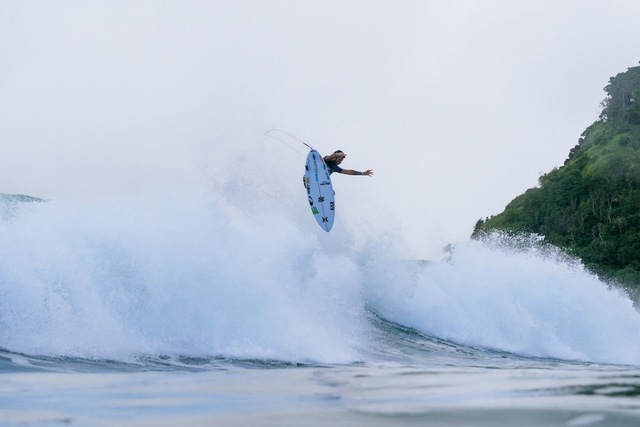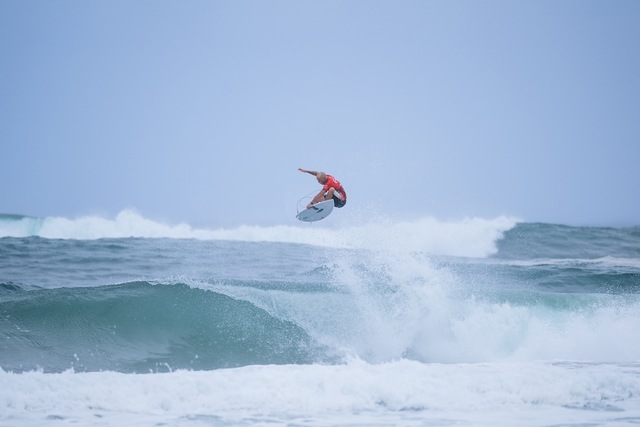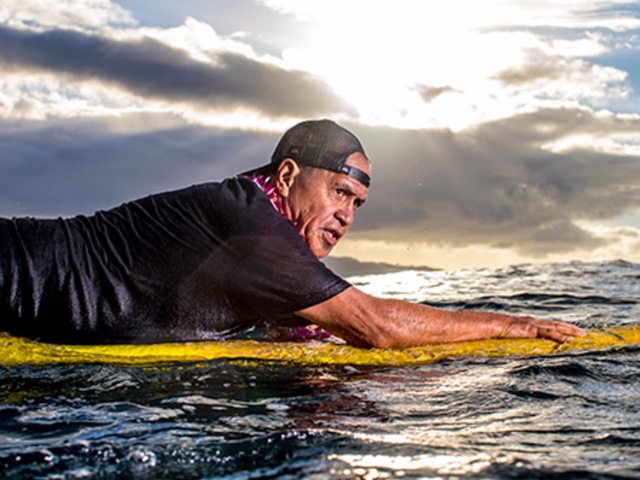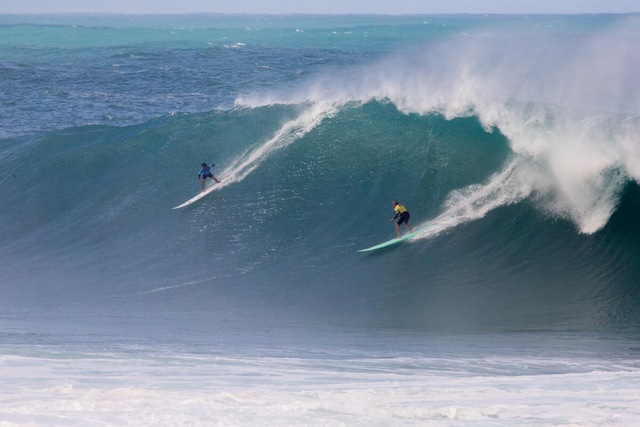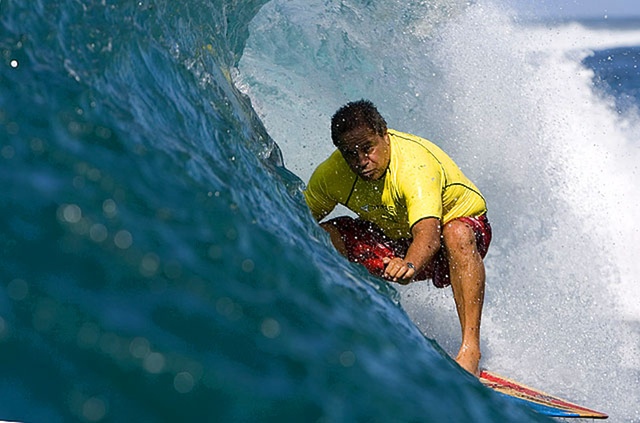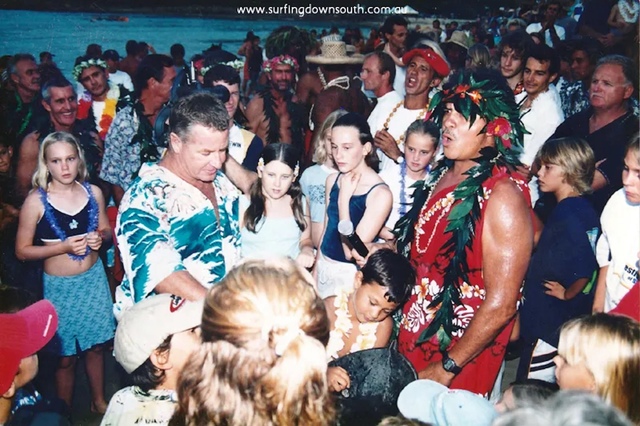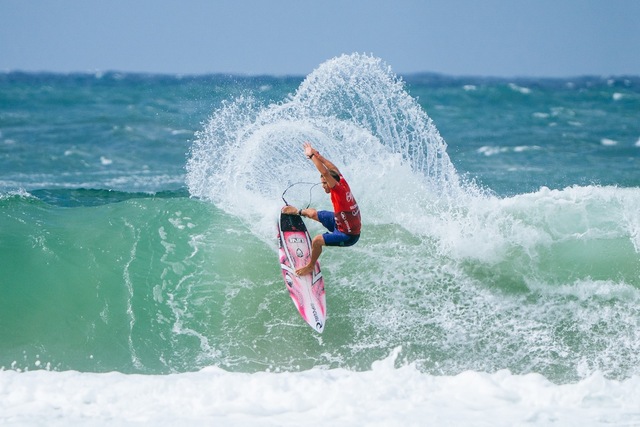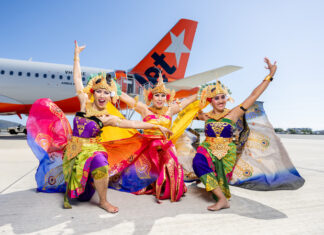Having spent half of last week’s Brine raving about the strength and audacity of Julian Wilson’s comeback party at the Burleigh Pro, I’m not going to repeat the dose by raving about what happened when the point got a bit more serious, however…
Since Jules finished a heroic second to a rampaging Fil Toledo in front of an exuberant and totally partisan Saturday arvo crowd on the headland, I need to focus on a few curious elements which took the edge of an otherwise brilliant five days of surfing at the highest level.
I missed the finals live and caught up on Saturday night over a pinot noir or three. There was no question in my mind that the best two surfers in the men’s draw contested the final. Brazil’s two-times world champ Toledo, making his own comeback of sorts with a slow climb (until now) back up the rankings after having taken a year’s sabbatical to address his morbid fear of really big waves, had improved with every heat appearance at Burleigh, confidently combining his brilliant air game with a knack for finding makeable barrels in the rough. He looked unstoppable, except by the 36-year-old comeback kid from Newcastle via Noosa, who matched Filipe’s growing confidence and cunning in every round.
It never really looked like the wheels would fall off for either of these great surfers, particularly as other form surfers, like Burleigh’s Liam O’Brien, title contender Ethan Ewing, wildcard Morgan Cibilic and powerhouse Jordy Smith fell away in the round of 16 and the quarters, with Kanoa Igarashi taking it all the way to the semis, where Jules had his measure.
The clash of the Titans began as expected, an air battle unleashed over the first two minutes with both Fil and Jules soaring above the lip for excellent eight-plus scores. Then the deep but difficult barrels came into play, with Fil possibly getting the edge but Julian’s intensity growing. Then, with 17 minutes to go and nothing separating them, I noticed a 9.07 score pop into the box for Toledo. Wait, what! I was watching the condensed replay so I switched to the full one and scrolled to 20 minutes remaining, then watched every move. Nothing. No vision, no comments from the box. Jules needed an 8.8 to get home and never got there, despite several valiant attempts.
On Sunday morning I went in search of answers to the mystery score and found an explanation of sorts on Swellnet from the astute Steve Shearer: “The highest score of the heat, a 9.07 from Pip, was never broadcast, never replayed, and never mentioned by commentators. How does the highest score of the final just go missing? It was like an alien spaceship landing on the lawn at the White House, abducting Donald Trump and it doesn’t make the nightly news. No-one saw anything? When we finally saw the wave taken out of the context of the heat it looked nowhere near a nine, despite all five judges awarding a number within 0.2 of each other. Most peculiar…”
But as Steve also noted, “A fitting finale for the event, with 28 waves ridden, 0.4 of a point separating eventual winner Toledo from runner-up wildcard Wilson.”
The story of the women’s event was, again, more about the runner-up than the winner, with veteran campaigner and happy face of pro surfing, Sally Fitzgibbons, struggling at the bottom end of the rankings with the mid-season cut looming, charging through the rounds knocking more fancied wunderkind out of her way as she went, to meet Hawaii’s Betty Lou Sakura Johnson in the final. But it could have been Tahitian Vahine Fierro instead.
In another moment of strangeness on finals day, the judges called an interference against Vahine in her semi against Sakura. I replayed this half a dozen times and Sakura’s staged claim became more obvious with every play. At the pointy end of a big comp, nerves can make you do strange things, but this was unfortunate, and Betty Lou would have won anyway.
Sal had had a great comp, but she was spent by the final. While Sakura surfed smoothly, tight in the pocket most of the time, Sal had no timing at all, and when all else failed she threw nonsensical air attempts until the final siren ended her pain. Shame, she’d been brilliant up to then.
Onward to the last leg of the Oz tour at Margaret River, where wings will be clipped in the mid-season cut. Come on, Sal, you can do it!
Vale Uncle Clyde Aikau
Tears all over Oahu and the rest of the surfing world last week with the news that the legendary Clyde Aikau had been claimed by pancreatic cancer at 75.
Clyde, younger brother of Hawaiian icon Eddie Aikau, who disappeared at sea in 1978 at the age of 31, carried the family legacy through the following decades with passion, bravery and a quiet dignity. In 1985 he helped establish the Quiksilver In Memory of Eddie Aikau, always known as The Eddie, a big wave contest which Clyde won in huge waves at Waimea Bay in 1986. He continued to compete at The Eddie until he was 66.
I got to know Clyde and Eddie when they brokered a peace deal on the North Shore in 1976, stopping attacks on Australian surfers by Hawaiian underworld figures. It was a tense few weeks, but I got to see the lighter side of the Aikaus when they were invitees to the first Stubbies Pro at Burleigh Heads in ‘77, where we enjoyed ukelele tunes over beers at the yacht club. A year later Eddie was presumed dead, having paddled his surfboard for help as the Hokule’a slowly sank at sea. His crew mates were subsequently rescued.
In later years Clyde became an important elder of the Hawaiian surfing tribe, visiting the Noosa Festival of Surfing on several occasions where he led the traditional blessing of the waters and paddle out as our honoured guest.
RIP, Uncle, you will be sorely missed.

